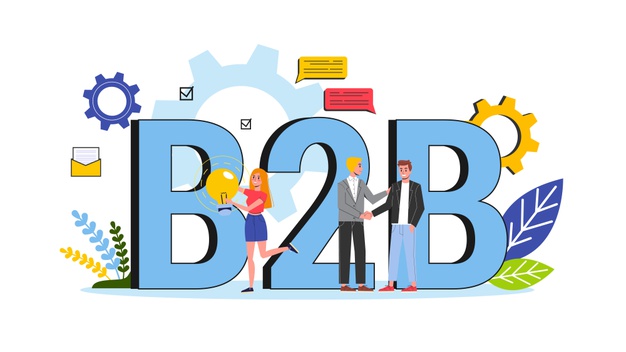Many experts point out that running a successful B2B business is easy if you avoid making some important mistakes. Even if you are not running exceptionally sophisticated campaigns to woo newer clients, simply avoiding mistakes can give your company the much-needed boost.
This is more important in the new scheme of things, especially for a post-COVID-19 business world.
With 2021 just around the corner, it is essential that you pay heed to the contents of this article and ensure that you are able to avoid some if not all of these mistakes.
In this article, we speak to some of the leading minds from the B2B world of marketing, sales, and logistics. We ask them about the mistakes and the way forward.
List of Top 5 Mistakes B2B Businesses should stop making right away
1. Maintaining Data on External Disks-
We all know how data is important to the success of any business. In the case of B2B companies, data can be the deciding factor between success and failure. Most B2B companies are still averse to maintaining data on the Cloud and prefer to use hard disks.
Experts are of the opinion that in addition to the risks of data getting corrupted or being destroyed by human error, this strategy is flawed and outdated. Maintaining data on the Cloud does not only increase its security but also ensures cross-department usage of the same.
2. Using Outdated ERP and Inventory Management Tools-
The next set of mistakes concerns B2B businesses still relying on age-old strategies for inventory management. With AI, ML, and Automation being offered by the best vendors, it is high-time, B2B businesses should opt for the best inventory optimization software.
This will allow B2B businesses to accelerate the pace of their functions, boost the efficiency of the team, and improve customer experience. Looking after simple things like reducing the turnaround times can have a major impact on any B2B business in the world.
3. Manual Task Assignment and Follow-Ups-
If you are a B2B business owner, you will agree that following up with your team members or checking the progress of their work can be a pain. Using phone calls, emails, WhatsApp and other outdated mechanisms promotes inefficiency and prevents clarity.
This is why automated task assignment workflow software should be used to better employee performance. From Trello to Asana, there are many credible ones in the market, which are simple to use and will allow you to keep track of the work assignments of your employees.
4. Doubting Digital Platforms-
Most business consultants point to the fact that B2B businesses and their owners are still hesitant when it comes to pursuing digital transformations. They still feel that the internet will not be able to help them fulfill their sales and marketing objectives.
However, nothing can be further from the truth. Using search engines and social media in a strategic fashion can help you with a number of advantages. From reaching your target audiences to improving branding and lead generation, there is a lot to achieve from digital.
5. Taking help from External Specialised Vendors-
B2B businesses think they must set up internal teams to start digital transformation or automate their processes. They fear hiring specialists. However, it does not have to be that way.
By working with specialized digital marketing agencies, they can bring on an external partner firm, which can help them in multiple ways. This will ensure that they do not have to hire teams, give them systems, and spend on their office spaces.
Once you start avoiding these mistakes, you will see a qualitative and quantitative transformation in your B2B business. You need to understand that the world is increasingly moving towards a digital framework, and as a business, you need to make the most of it.
Common B2B Marketing Terms you Should Know
Still a beginner at your B2B marketing strategies. Here is your dictionary to understand the different B2B marketing lingo.
1. What is the 80/20 Rule in B2B?
The 80/20 rule simply states that 80% of a company’s revenue comes from 20% of its customers.
In a business-to-business model, this highlights the need to identify and cultivate your key accounts.
Therefore, concentrate on your sales resources on those customers who generate the most profit for you rather than trying to be all things to all people. You truly cannot impress anyone!
2. What is the 95/5 Rule for B2B?
The 95/5 rule suggests that at any point in time, 95% of your target market is not actively buying, and only 5% are.
As a result, B2B firms need to focus on consistently building brand and supplier awareness.
This also includes developing relationships with customers so that they will think of them when they do go into ‘buying mode.’ B2B customers are different than dealing with one customer. Therefore, it is important you are always in their mind.
3. What are the 4Cs of B2B Marketing?
The 4Cs are Client, Cost, Communication, and Convenience.
In B2B marketing, it’s all about understanding the client’s needs, keeping costs in check, opening channels for communication and making sure your product or service is convenient and of value to the customer – this is what customer relationships and loyalty are built upon in the world of B2B.
4. What are the 3 Most Important Qualities of a Successful B2B Salesperson and Why?
Knowledge, Persistence, and Empathy!
Successful B2B salespeople must be knowledgeable, persistent, and empathic. The more knowledge you have about your product but also about the development in your industry or the general economy – the more credible person you become for your client.
Because let’s face it, only real knowledge gives you power over the situation (matched with superb confidence). Every business out there looking for answers is desperately looking for someone who has all the answers.
However, as we talk of successful B2B salespersons, we need to consider that they often also deal with long sales cycles. In those cases, persistence is what will make you stand out from the competition.
If I shower my leads with attention every day, no other competitor can gain a share of attention.
While we’re in relationships, people buy from people they “take care of them.” Therefore, a successful B2B salesperson must adopt empathy when dealing with their clients.
5. How to Gain B2B Sales Experience as a Beginner?
As a beginner, you can gain sales experience in B2B by shadowing your experienced sales reps, going to networking events, and taking internships or entry-level sales positions.
The most valuable lessons are learned through real-world interactions, so concentrate on developing exceptional communication and negotiation abilities.
Plus, never stop learning, self-reflecting, and staying on top of industry news if you want to become an expert.
6. What is the B2B Lifecycle Strategy?
The B2B lifecycle strategy refers to an end-to-end management of the customer journey.
This starts from leading to post-sales support by providing value at every stage, ensuring client satisfaction and loyalty through attracting, engaging, converting, and retaining clients with consistent, personalized experiences.
Read Also:






















